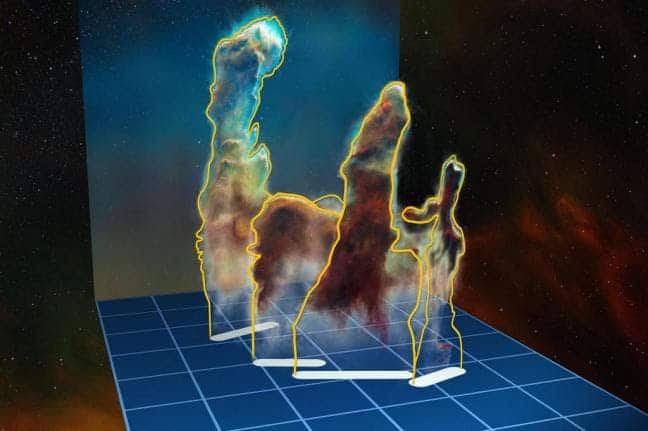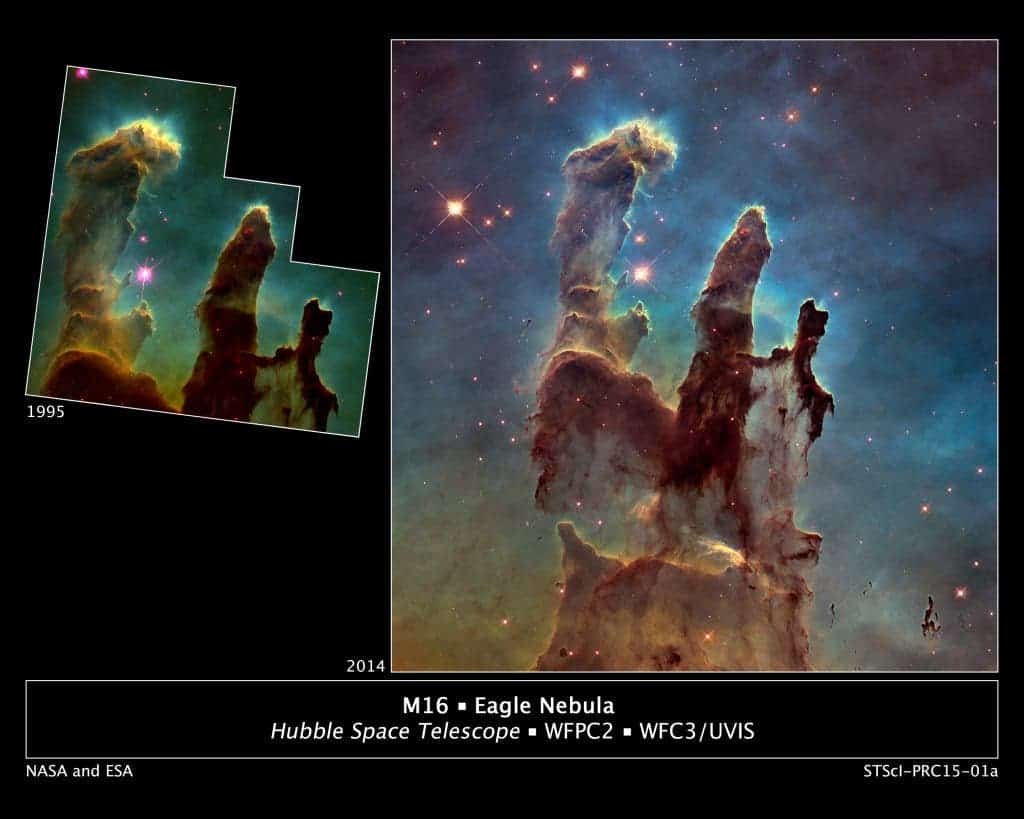Using the MUSE instrument aboard ESO’s Very Large Telescope (VLT), astronomers have made a three dimensional view of the famous Pillars of Creation – a photograph taken by Hubble 20 years ago showing elephant trunks of interstellar gas and dust in the Eagle Nebula, some 7,000 light years from Earth. The 3D image shows never before seen details of the dust columns, greatly expanding scientists’ knowledge of how these formed, but also what’s in stored for them in the future.

These beautiful features were born out of the intense energy spewed by new stars in the Eagle Nebula. It’s actually a classic example column-like shapes that develop in the giant clouds of gas and dust nearby newborn stars.

The same stars that formed the pillars will also destroy them, however. On one side, the ultraviolet radiation and stellar winds gushing from freshly formed blue-white O and B stars blow away less dense materials from their vicinity, causing the pillars to form in the place. On the other side, however, the same radiation is breaking up the gas and dust columns. Denser pockets act like a shield and protect less dense regions from destruction, but not forever. Using this new data, astronomers operating the Very Large Telescope estimate the pillars lose roughly 70 times the mass of the sun every million years. This would entail that the Pillars of Creation only have three million years left before they’re obliterated. It’ll be only the Pillars of Destruction that remain in the aftermath.
The new study also reports fresh evidence for two gestating stars in the left and middle pillars as well as a jet from a young star that had escaped attention up to now, as reported in Monthly Notices of the Royal Astronomical Society.
Was this helpful?



